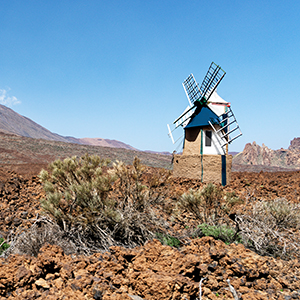For my type of photography (mainly capturing and recording scenes that I see with my own eyes), I use very little of the full potential of Adobe Photoshop and Adobe Camera Raw. However, these tools have proved invaluable for basic tasks such as cropping and recovering highlight areas (such as blue skies) in the conversion from RAW to JPEG format. Even when it comes to adding vibrance or saturation to travel photos, I try to stay on the conservative side and a clear distance from the surreal over-saturated, over-sharpened image styles that seem to dominate Google’s image search results these days. While tools such as Content-Aware Fill can make light work of removing objects and visual distractions from photographs, I’ve always preferred to rely on cropping or recomposing a scene to avoid unwanted objects. I have absolutely no issue with the use of such tools and I feel every photographer is free to decide on the extent to which they use tools like these.
One lunchtime, I decided to play with Photoshop’s new Generative Fill tool, which uses Artificial Intelligence (AI) to add (or remove) elements from photos, using a simple-to-use text-based interface. Within 30 minutes, I had created the following images. All I did was type “windmill”, “blue glove”, “tent”, “boots” and “cactus” in the search box and added the appropriate image(s) to some of my existing photos. No editing was needed to fit these elements into the scenes. To say I was impressed is an understatement, and you can view the images created, in full resolution, here:
Gallery of Experiments with Photoshop’s Generative Fill
Based on this little experiment, I think that AI is going to have a huge impact on professional and amateur photography. With businesses wanting to stand out online with more, and more ‘interesting’ images, it is inevitable that the proportion of ‘real’ images (that is, those captured fully by a camera) is going to diminish rapidly. For those amateur photographers desperately seeking validation and likes on social media platforms, trying to make their images more noticeable and striking will inevitably cause them to increasingly rely on AI tools just to ‘keep up’. Apart from the most dedicated landscape and wildlife photographers, who is realistically going to wait for an animal to come along to complete their composition when they can add an interesting animal later on? In camera club competitions across the world, the temptation to ‘improve’ photos to secure first prize will be irresistible to many members.
Where this all leaves you will depend very much on the type of photographs you take, the reasons why you take photographs and the extent to which you need to earn a living from photography. For me, photography is a hobby, so I don’t need to impress clients or be ‘competitive’. I predominantly take photos of my family and travels, and it is very much about capturing what I see with my own eyes. I have no interest in chasing social media likes. As a result, there’s no drive to compete in the world for attention.
Many technical advances in photography do excite me, however. Evolution to true HDR photography will allow me, and other photographers, to display much more of the dynamic range captured by cameras, as discussed in my HDR Photography page. Migration to the superior image stabilisation capabilities of my Sony A7R V camera compared to its predecessor has allowed me to capture tack-sharp images in low-light at low shutter speeds that, once upon a time, I would never have thought possible. Already, I typically photograph the interior of churches and cathedrals without a tripod at 100 ISO. Continued development of such systems offers the future prospect of never needing a tripod or high ISO capture. Widespread further development of smart processing, such as multiple image capture (which is already part of Apple’s iPhone Photonic Engine), could provide incredibly detailed, noiseless images in all types of camera. The development of AI-based autofocus systems continues apace and, judging by the autofocus performance of the Sony A7R V, the future will be extremely exciting, with cameras able to track a multitude of subjects with uncanny accuracy.
Overall, the future of photography could be exciting or terrifying, depending on your circumstances and viewpoint. For me, the upsides more than outweigh the potential downsides so I think it is better to embrace technology rather than hide from it and pretend it isn’t happening. Having said that, I cannot see me becoming a prolific user of Photoshop’s Generative Fill any time soon!





